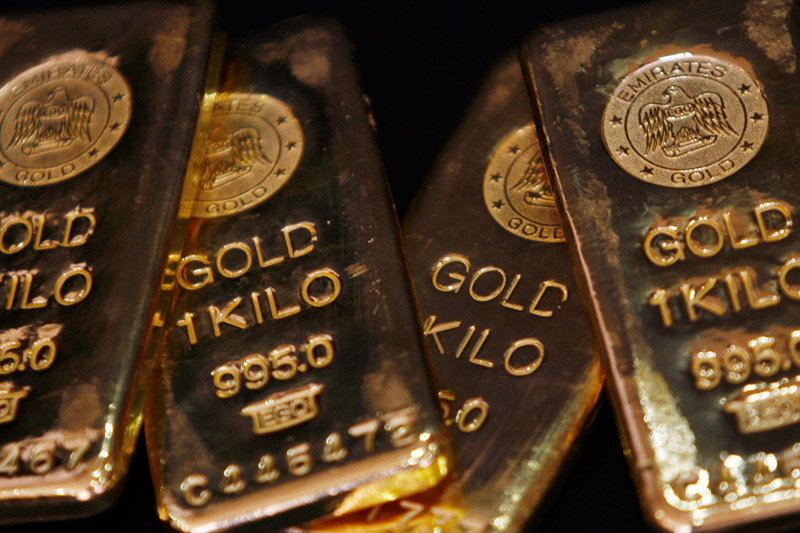Investing.com - Gold prices rose in tandem with the euro on Thursday after the European Central Bank left monetary policy unchanged and sparked demand for the single currency, which came at the greenback's expense.
Gold and the dollar tend to trade inversely with one another.
On the Comex division of the New York Mercantile Exchange, gold futures for April delivery traded at $1,349.70 a troy ounce during U.S. trading, up 0.70%, up from a session low of $1,331.40 and off a high of $1,352.40.
The April contract settled up 0.18% at $1,340.30 on Wednesday.
Futures were likely to find support at $1,320.10 a troy ounce, the low from Feb. 28, and resistance at $1,355.00, Monday's high.
The ECB left its benchmark interest rate unchanged at 0.5%, as recent data pointed to a moderate recovery in the euro zone.
ECB President Mario Draghi said he was encouraged by Wednesday data revealing that business activity in the euro zone rose to a 32-month high in February and praised improvements in the services sector, which accounts for the majority of job growth.
Draghi reiterated the ECB’s forward guidance on rates, stressing that interest rates will remain at their present levels or lower for an extended period. The ECB remains determined to maintain the high degree of accommodative monetary policy for as long as needed, and will take further actions as it sees fit, he added.
Still, the decision to leave policy unchanged bolstered the single currency on Thursday against the dollar, often a recipe for rising gold prices due to the yellow metal's tendency to move inversely from the U.S. currency.
The central bank revised its forecast for economic growth in 2014 to 1.2% from 1.1% in December.
However, the bank revised down its inflation forecast for this year to 1.0% from 1.1% in December. The bank expects inflation to pick up to 1.3% in 2015 and 1.5% in 2016, remaining below the bank’s target of just under 2%.
Meanwhile in the U.S., the Department of Labor reported earlier that the number of individuals filing for initial jobless benefits last week fell by 26,000 to 323,000 from the previous week’s revised total of 349,000.
Analysts were expecting jobless claims to fall by 11,000 to 338,000 last week.
A separate report showed that U.S. factory orders fell 0.7% in February, compared to expectations for a 0.4% decline.
Meanwhile, silver for May delivery was up 1.11% at US$21.508 a troy ounce, while copper futures for May delivery were up 0.32% at US$3.213 a pound.
